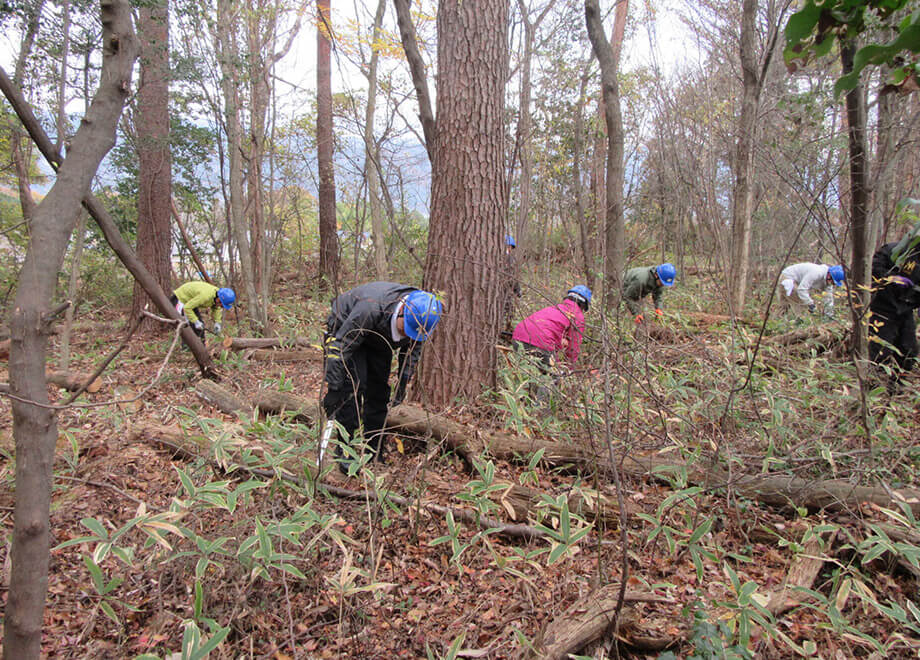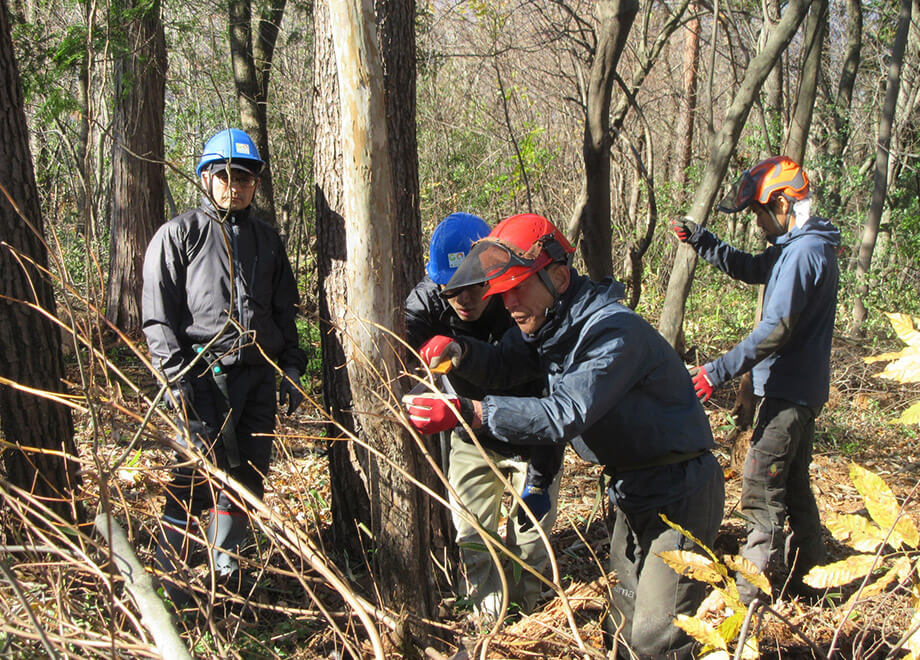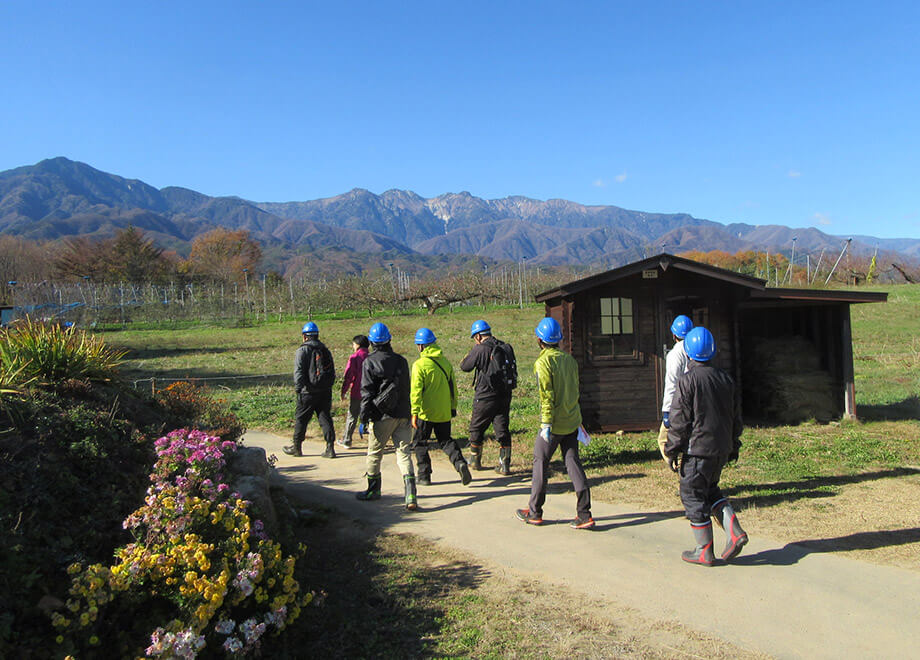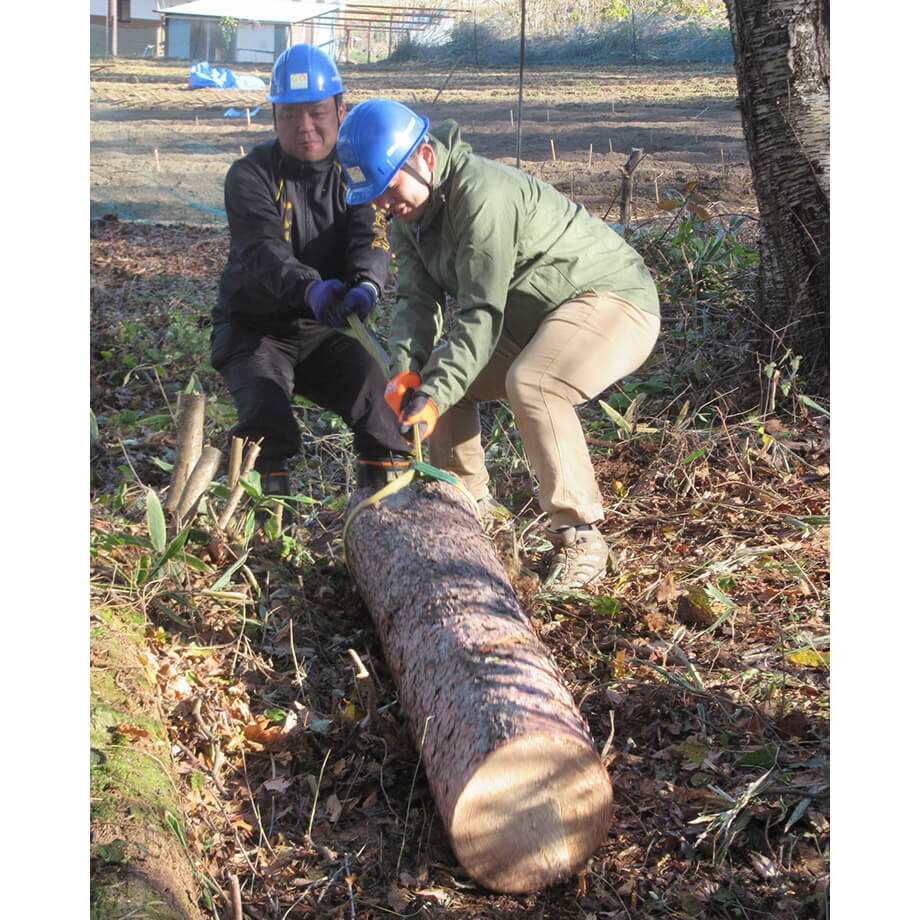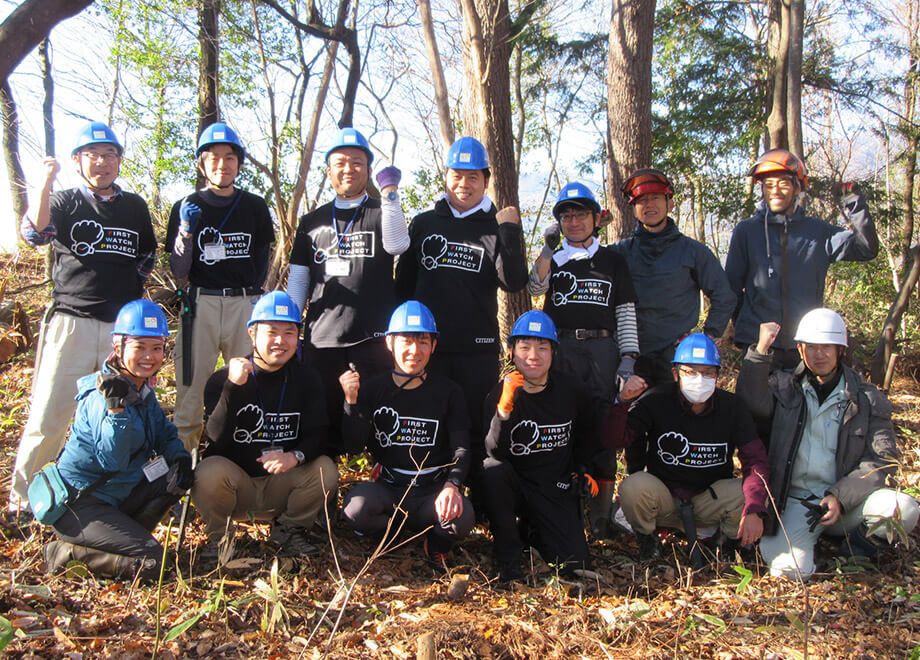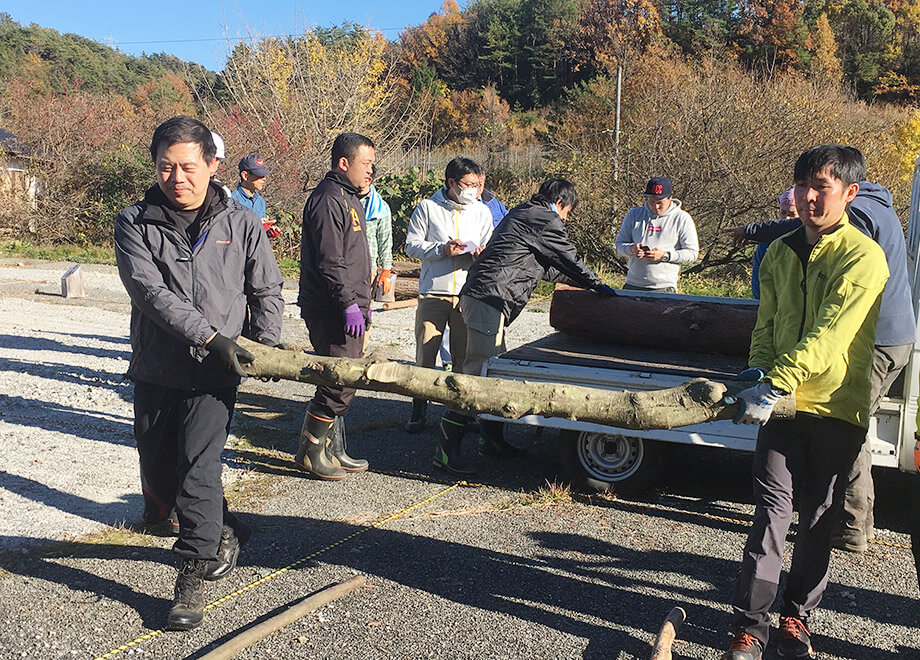Social Contribution Mission Program
Background and history of activities in Nagano Prefecture
The vicinity of the location of these activities has a population of 15,000 people. It is estimated that in 30 years the population will decrease to about 10,000, of whom the percentage aged 65 or older will rise to roughly 30% to 45%. Depopulation and the aging of society are anticipated to make it difficult to maintain the local community. In light of this background, such issues as the degradation of the natural environment centered on rural land, the proliferation of uncared-for bamboo groves, increase in untended farmland, and wildlife damage are growing increasingly severe.
FY 2018 support period: November 19–21, 2018
FY 2019 support period: April 22–24, 2019
Location: Iijima, Nagano Prefecture, and environs
Social challenge: Ecosystem preservation, climate-change mitigation![]()
![]()
Activity: Support for a community experiencing depopulation and aging
In cooperation with Inari Iira, an NPO active in the area, through the specified nonprofit organization, NICE, Group employees (FY 2018: 10 employees; FY 2019: 10 employees) took part in these activities to improve uncared-for forests in the town of Iijima, Nagano Prefecture, and neighboring region. These activities were conducted in cooperation with the efforts of the Shinano Nakagawa Kinoeki Project,*1 an organization that aims to revitalize the community from within instead of relying only on outside assistance. The woods were logged and lumbers were transported to the project's central facility over a two-day period. The final day of these activities included a tour of the CITIZEN WATCH MANUFACTURING CO., LTD., Iida-Tonooka Plant.
*1The Shinshu Nakagawa Kinoeki Project
Making use of the timber resources in satoyama forests and establishing a framework that gently circulates people, things, and money through the community is an important part of regional revitalization efforts. The purpose of these activities is to put a halt to the deterioration of cultivated forests and restore the possibility of a bright future to these rural communities. More specifically, the project sets up a collection system for forest scraps so that the community can get a fair price for its unprocessed timber from local mountain forests, traded using a local currency. Ki-no-Eki means “tree depot”, and the cut lumber is taken there and delivered to/purchased by people who need it in exchange for a “satoyama voucher” that can be used locally. The lumber is primarily used as biomass fuel and as fuel for wood-fired generators.
The system gives the discarded lumber new value as it passes through the Ki-no-Eki—value that then gives rise to different kinds of value in the form of consumer goods and fuel. The purpose of firmly establishing this cyclical and circular framework is to put a halt to the deterioration of cultivated forests and restore the possibility of a bright future to the community.
